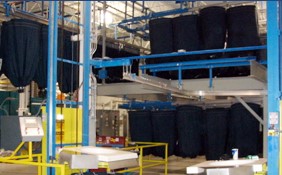
By Raymond Tamburrino, Fairfield Laundry Machinery
I am approaching my 40th year of being in the laundry business. I have worked in more than one field and lint is in my blood.
The progression of laundry machinery is like any other industry, driven by cost per pound, savings and technology. Washers made of wood, powered by a mandrill and manual controls eventually evolved into the modern tunnel washer. Large, loud dryers that wasted energy have evolved into efficient and sleek 400 to 450 pound machines.
One of the biggest leaps is technology in finishing equipment. Today, the spreader ‘has eyes’ – cameras that can spot a stain or a rip in a garment and reject it so customers do not get less-than-perfect table linen. Irons are the one piece of machinery in a modern laundry that can be debated. Which is best? A cast-iron chest with a double pass apron or a mild steel chest with high-speed rollers? This is a question for clean side managers to discuss.
Water treatment, heat reclamation and lint collection were not front and center years ago. Now they are almost mandatory. Green credits are worth their weight in gold. Monorail delivery systems have gone from massive three-inch I-beam systems with cast iron trolleys to soil and clean monorail systems that can track goods throughout the plant.
Where has all of this technology taken the owner-operator?
You can run your plant with less full-time employees, however the employees must be trained to a higher level of expertise. Higher level of training equals higher level of pay. Maintenance staff must consist of top-notch technicians. The days of midnight oil are over. Fewer people are being paid more, but what happens when someone is sick? Most of the staff must be able to do more than one task on the floor – again, translating to a higher level of pay.
Post Coronavirus, hand sorting hospital linens (or any linens) is risky business. Laundries across the world are dealing with an added layer of difficulty. Personal protection is now more than earplugs and gloves. What is the answer? Where is the technology? One idea is bulk loading the washers and post sorting. It has been done in Québec province in Canada and in Europe for many years. The rewash will increase but that’s preferable over OSHA closing a plant if someone passes from Covid-19.
Bulk loading of washers is something monorails do safely. If the sling comes from the hospital pre-loaded in sling carts, one or two people wearing protective coverings and respirators can load the slings into the system. Once linens are on the tracks, a human should not touch them until they have been washed. The washed linen can then be sorted safely creating a safe option to getting linens to hospitals and nursing homes on time, post-COVID.












